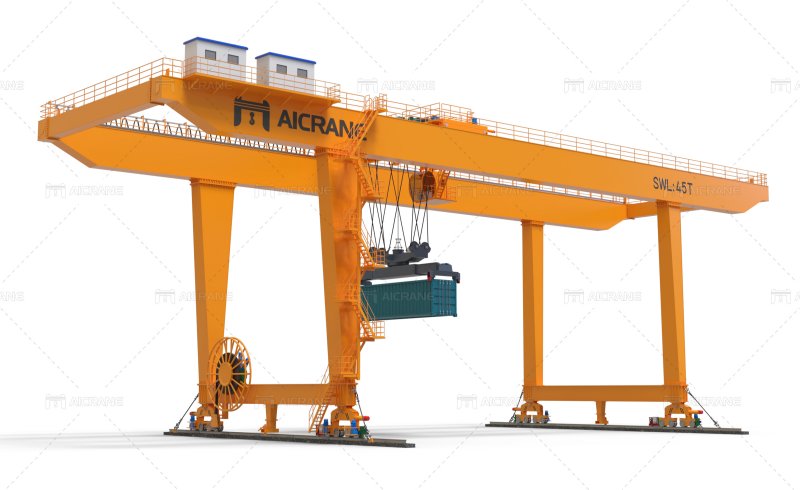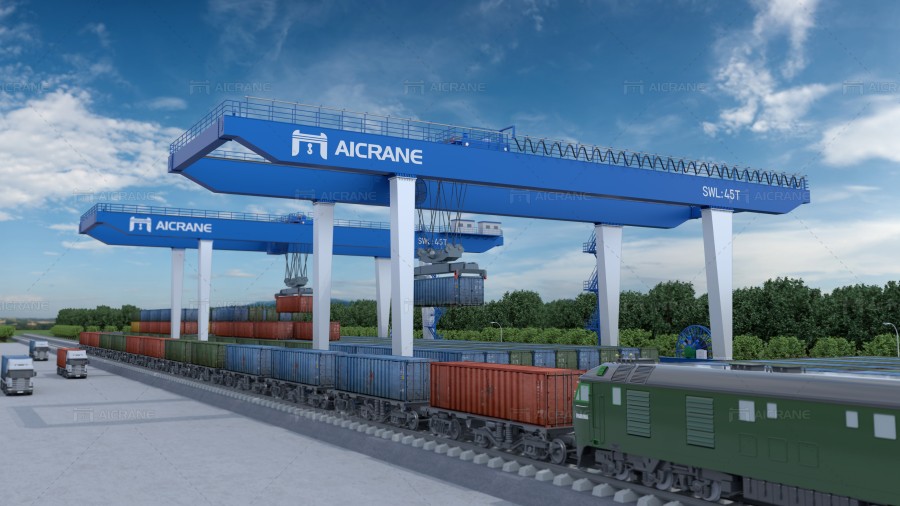In the bustling world of global trade and logistics, the efficient movement of containers plays a pivotal role in ensuring smooth operations and maximizing productivity. At the heart of many modern terminals, container handling gantry cranes stand tall as indispensable giants of efficiency and capability.
These towering machines have undergone significant advancements in recent years, transforming the landscape of maritime logistics and port operations. This article explores the revolutionary aspects of container handling gantry cranes, their impact on modern terminals, and the innovations propelling them forward.

Evolution of Container Handling Gantry Cranes
Container handling gantry cranes, also known as ship-to-shore (STS) cranes, are specialized equipment designed for loading and unloading containers from ships onto trucks or trains, and vice versa. These cranes are typically installed at container terminals, where they play a crucial role in the movement and storage of containers.
Historically, STS cranes were large, fixed structures towering over port facilities, capable of reaching across ships to lift and move containers with precision. Early models were manually operated and had limited lifting capacities compared to today’s standards. However, advancements in engineering, materials, and technology have transformed these cranes into highly efficient and sophisticated machines.
Key Features and Capabilities
Modern container handling gantry cranes are characterized by several key features that enhance their functionality and performance:
High Lifting Capacity: Today’s STS cranes can lift containers weighing up to 65 tons or more, allowing them to handle the largest container ships in operation.
Twin Lift Capability: Many modern cranes are equipped with twin lift spreaders, which enable them to lift and transport two containers simultaneously. This doubles the crane’s productivity and reduces turnaround times for ships.
Reach and Span: Advanced engineering has enabled cranes to have greater reach and span, reaching across multiple rows of containers on a ship and maximizing the terminal’s operational efficiency.
Automation and Remote Operation: Automation technologies have revolutionized container handling operations. Automated STS cranes can operate independently, using sensors and software to precisely position containers without human intervention. Remote operation capabilities allow operators to control cranes from a centralized location, improving safety and efficiency.
Advanced Control Systems: Modern cranes are equipped with sophisticated control systems that optimize crane movements, reduce sway, and ensure precise container placement. These systems incorporate real-time data analytics to optimize workflow and minimize downtime.
Impact on Terminal Operations
The deployment of revolutionary container handling gantry cranes has had a profound impact on terminal operations:
Increased Throughput: The ability to handle larger ships and more containers per hour has significantly increased terminal throughput, accommodating the growing volume of global trade.
Reduced Turnaround Times: Efficient crane operations reduce the time ships spend at berth, minimizing congestion in ports and enhancing overall port efficiency.
Improved Safety: Automation and advanced safety features have enhanced workplace safety by reducing human error and providing operators with real-time monitoring and control capabilities.
Optimized Space Utilization: The reach and span of modern cranes allow terminals to optimize storage space by stacking containers higher and closer together, maximizing the terminal’s capacity. The container cranes can be rmg container crane, or rubber tyred container crane to suit different containers handling needs.
Environmental Impact: Some modern cranes are equipped with electric power systems or hybrid technologies, reducing emissions and noise pollution compared to traditional diesel-powered models.

Innovations Driving Forward
The continuous evolution of container handling gantry cranes is driven by ongoing innovations in technology and engineering:
Next-Generation Automation: Advances in artificial intelligence (AI) and machine learning are paving the way for fully autonomous cranes capable of making real-time decisions and adjustments based on environmental conditions and operational data.
Electric and Hybrid Power Systems: The shift towards electric and hybrid power systems reduces carbon footprint and operational costs, aligning with global sustainability goals.
Predictive Maintenance: Utilizing data analytics and predictive maintenance algorithms, terminals can minimize downtime by identifying potential equipment failures before they occur.
Enhanced Safety Features: Innovations in safety systems, including collision avoidance technologies and improved operator interfaces, further enhance workplace safety and operational efficiency. Due to special lifting needs, the container cranes are usually double girder gantry cranes. Aicrane provides wide range of container cranes to meet various requirements.
Future Outlook
Looking ahead, the future of container handling gantry cranes promises even greater advancements:
Smart Ports: Integrated systems that connect cranes, trucks, and ships through IoT (Internet of Things) technologies will enable seamless and synchronized operations across entire ports.
Green Technologies: Continued development of renewable energy sources and zero-emission technologies will further reduce the environmental impact of terminal operations.
Modular and Scalable Designs: Modular designs will allow terminals to adapt cranes to changing operational needs quickly, ensuring flexibility and efficiency.
Revolutionary container handling gantry cranes have transformed modern terminals, enhancing efficiency, safety, and sustainability in global trade and logistics. With continuous innovations in automation, energy efficiency, and operational capabilities, these towering machines are poised to play an even more significant role in shaping the future of maritime logistics. As terminals embrace these advancements, they will not only meet the demands of today’s global supply chains but also pave the way for more resilient and efficient port operations in the years to come.